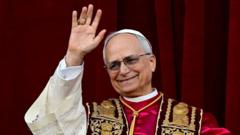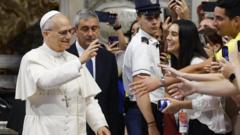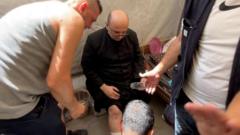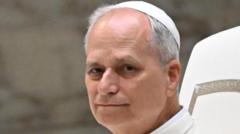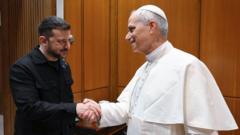Once the cardinals enter the Sistine Chapel for the delicate task of electing a new pope, all eyes turn toward a chimney that protrudes prominently from the chapel. Observers in St. Peter’s Square are keenly attuned to the smoke that will escape this chimney: white suggests a new pope has been chosen, while black indicates that the cardinals remain at an impasse.
History scholars trace this ceremonial smoke signal back to the 19th century during conclaves that once took place at the Quirinale Palace, now serving as the Italian presidential residence. Frederic J. Baumgartner's “Behind Locked Doors” documents that the first recorded instance of using smoke to signal the election outcome occurred in 1823. Prior to that, while the ballots from cardinals were indeed burned, there had been no formal practice to notify the public regarding the election's status.
The smoke itself is produced by incinerating the cards used for voting as well as any accompanying notes from the cardinals. Each round of voting generates smoke that is sent up the chimney to inform the eager crowd assembling outside. The initial round of voting occurs on the first day with subsequent rounds following on the mornings and afternoons of subsequent days until a candidate secures the requisite two-thirds majority.
Traditionally, to achieve the distinct white smoke color that indicates a successful election, wet straw was thrown into the stove. However, this practice proved unpredictable. For instance, during the conclave of 1958, observers were misled multiple times by white smoke emanating from the chimney, mistakenly interpreting it as an indication that a new pope had been elected when, in fact, no decision had been reached.
As this time-honored tradition continues, the world watches with bated breath, awaiting the message that will emerge from the chimney high above the Sistine Chapel.








